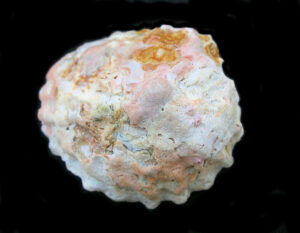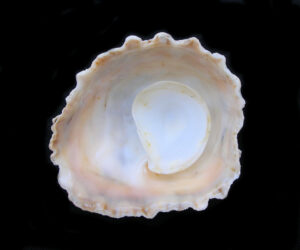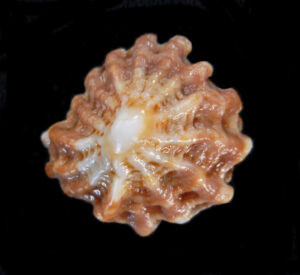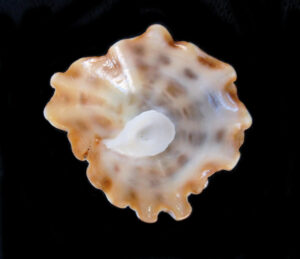Imbricate Cup-and-Saucer Shell, Crucibulum scutellatum

 Imbricate Cup-and-Saucer Shell, Crucibulum scutellatum. Shell collected off the beach in the greater Cabo San Lucas area, Baja California Sur, January 2018. Size: 5.7 cm (2.2 inches) x 5.1 cm (2.0 inches).
Imbricate Cup-and-Saucer Shell, Crucibulum scutellatum. Shell collected off the beach in the greater Cabo San Lucas area, Baja California Sur, January 2018. Size: 5.7 cm (2.2 inches) x 5.1 cm (2.0 inches).

 Imbricate Cup-and-Saucer, Crucibulum scutellatum. Shell collected off the beach in the greater Cabo San Lucas area, Baja California Sur, March 2018. Size: 5.8 cm (2.3 inches) x 5.2 cm (2.0 inches).
Imbricate Cup-and-Saucer, Crucibulum scutellatum. Shell collected off the beach in the greater Cabo San Lucas area, Baja California Sur, March 2018. Size: 5.8 cm (2.3 inches) x 5.2 cm (2.0 inches).
The Imbricate Cup-and-Saucer, Crucibulum scutellatum (Wood, 1828), is a gastropod mollusk that is a member of the Calyptraeidae Family of Cup-and-Saucer and Slipper Limpet Family. They are also known as the Shield Cup and Saucer and in Mexico as picacho corrugado. Their shells vary in the outline of the base. They have coarse, scaly, radial ridges that extend to the shell margins as irregular scalloping. The interior cup is attached to the apex and usually attached on one side. The exterior of the shell is generally brown in color; the interior may be mottled gray and/or brown. The Imbricate Cup-and-Saucer Shells reach a maximum of 7.7 cm (3.0 inches) in diameter.
Imbricate Cup-and-Saucer Shells are found on top of rocks or shells on mud flats in the intertidal zone to depths up to 27 m (90 feet). They range from Cedros Island, Baja California to Tierra del Fuego at the southern tip of South America, and are found throughout the Sea of Cortez.